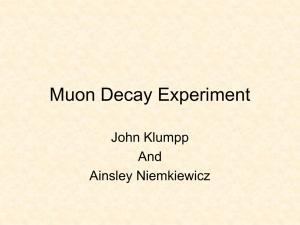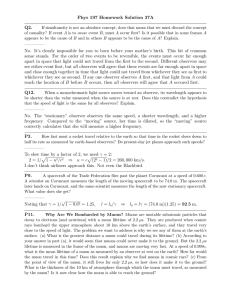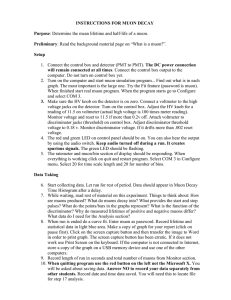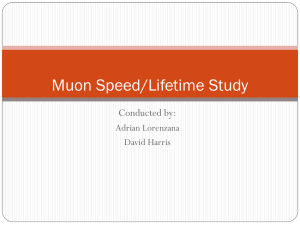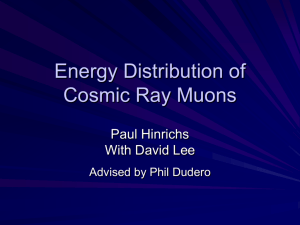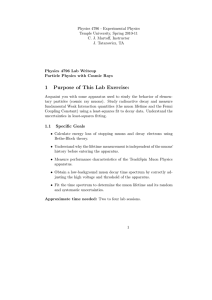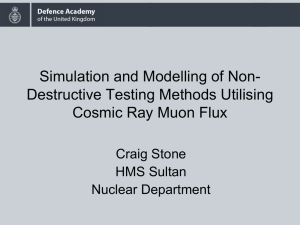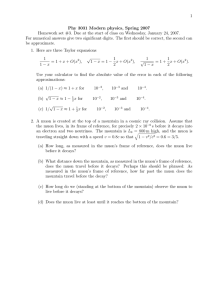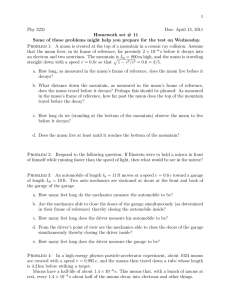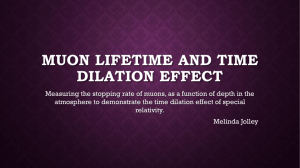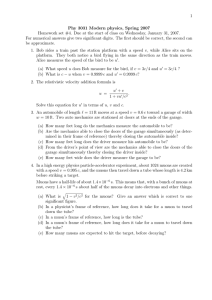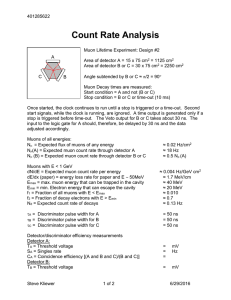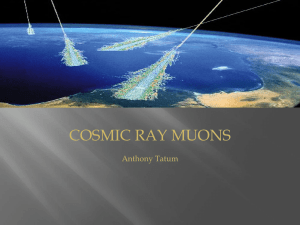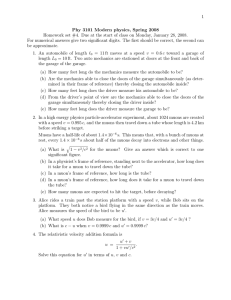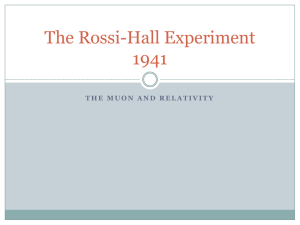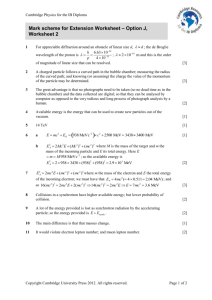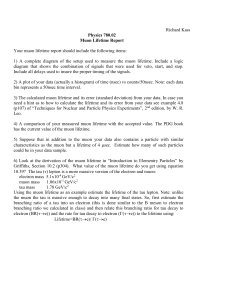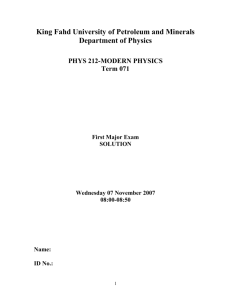muon-questions
advertisement
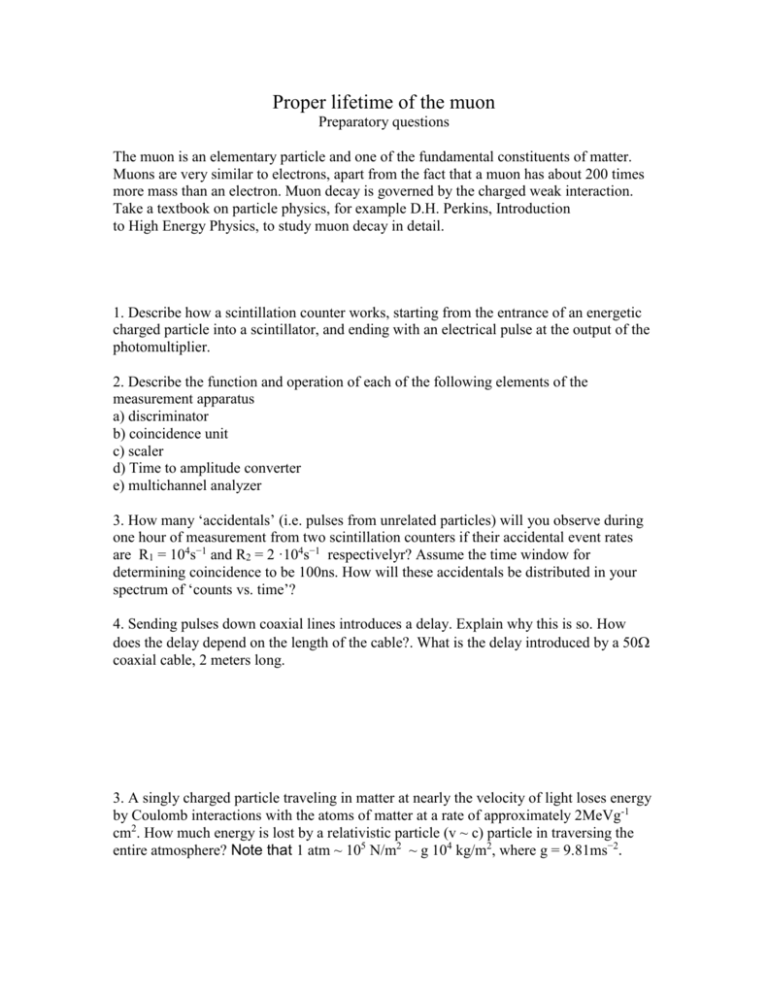
Proper lifetime of the muon Preparatory questions The muon is an elementary particle and one of the fundamental constituents of matter. Muons are very similar to electrons, apart from the fact that a muon has about 200 times more mass than an electron. Muon decay is governed by the charged weak interaction. Take a textbook on particle physics, for example D.H. Perkins, Introduction to High Energy Physics, to study muon decay in detail. 1. Describe how a scintillation counter works, starting from the entrance of an energetic charged particle into a scintillator, and ending with an electrical pulse at the output of the photomultiplier. 2. Describe the function and operation of each of the following elements of the measurement apparatus a) discriminator b) coincidence unit c) scaler d) Time to amplitude converter e) multichannel analyzer 3. How many ‘accidentals’ (i.e. pulses from unrelated particles) will you observe during one hour of measurement from two scintillation counters if their accidental event rates are R1 = 104s−1 and R2 = 2 ·104s−1 respectivelyr? Assume the time window for determining coincidence to be 100ns. How will these accidentals be distributed in your spectrum of ‘counts vs. time’? 4. Sending pulses down coaxial lines introduces a delay. Explain why this is so. How does the delay depend on the length of the cable?. What is the delay introduced by a 50 coaxial cable, 2 meters long. 3. A singly charged particle traveling in matter at nearly the velocity of light loses energy by Coulomb interactions with the atoms of matter at a rate of approximately 2MeVg-1 cm2. How much energy is lost by a relativistic particle (v ~ c) particle in traversing the entire atmosphere? Note that 1 atm ~ 105 N/m2 ~ g 104 kg/m2, where g = 9.81ms−2. (You might want to solve example 2.1 of page 33 in the book of W.R. Leo, Techniques for Nuclear and Particle Physics Experiments, 2nd edition, Springer Verlag (1994) Berlin, Heidelberg) 1. How are measurements of the lifetime and mass of the muon used to measure the strength of the weak interaction (Fermi’s Coupling constant)? 1. Cosmic rays are the source of the muons in our experiment. Describe the properties and origin of cosmic rays. How are cosmic ray muons produced in the upper atmosphere? What are the primary particles and what are the production mechanisms for cosmic muons? Why are they particularly penetrating particles (as opposed to electrons or protons)? 2. The muon has a lifetime of μ = 2.197 μs. According to classical physics, what is the distance that a muon would travel at the speed of light during its lifetime? Why do muons produced in the upper atmosphere, say at 10 km, reach the sea level before they decay? What is the speed = v/c of a muon with an energy of 2 GeV? How far will the muon travel before disintegrating?


